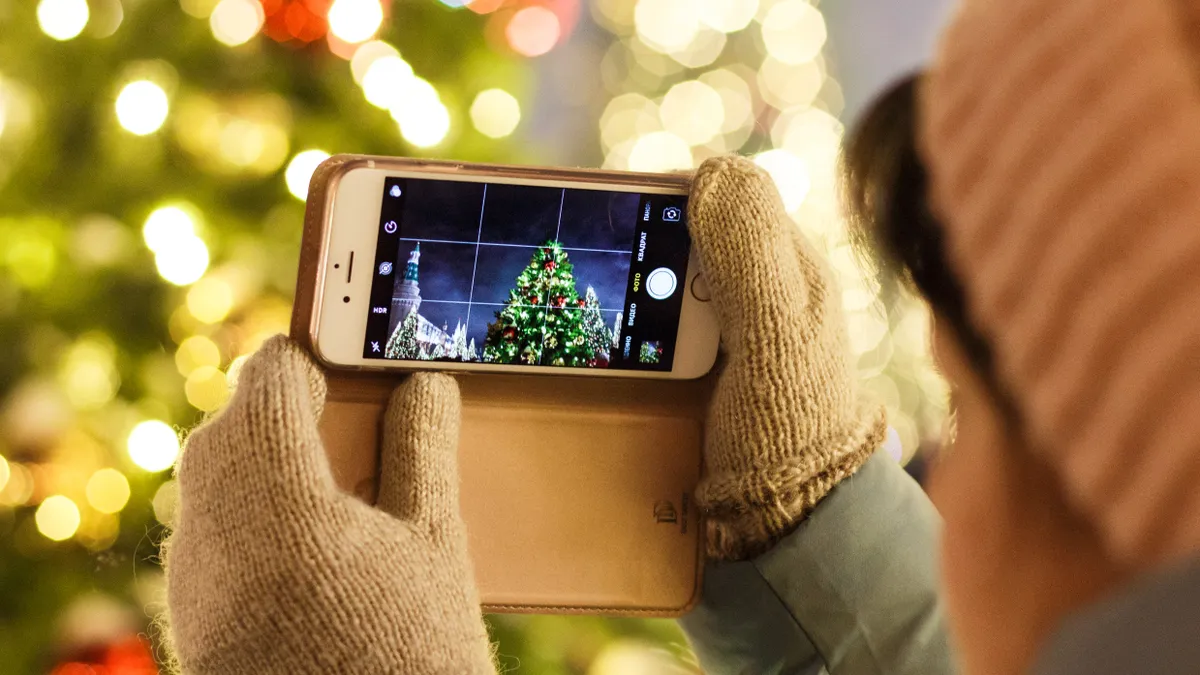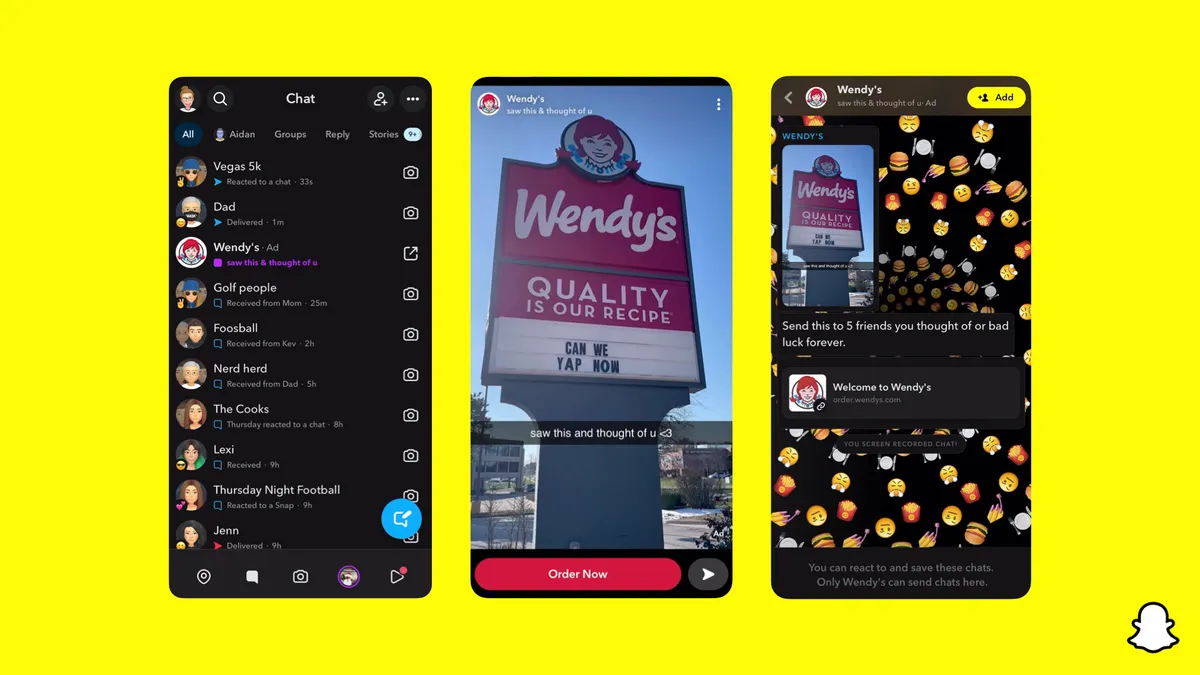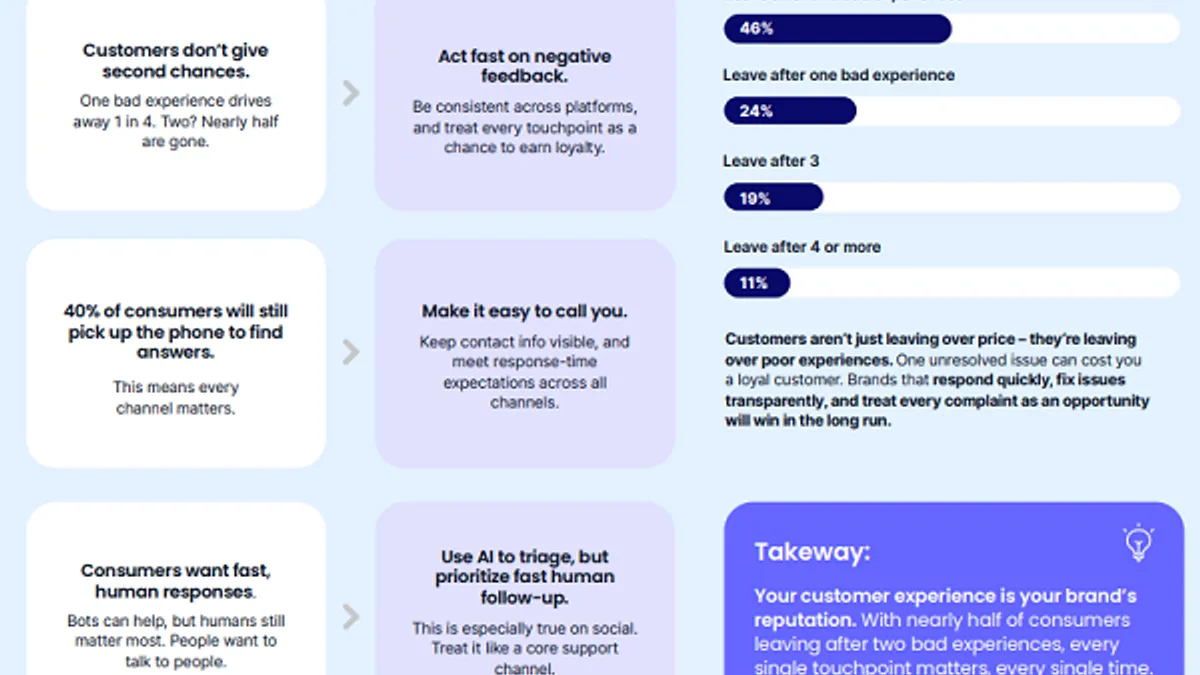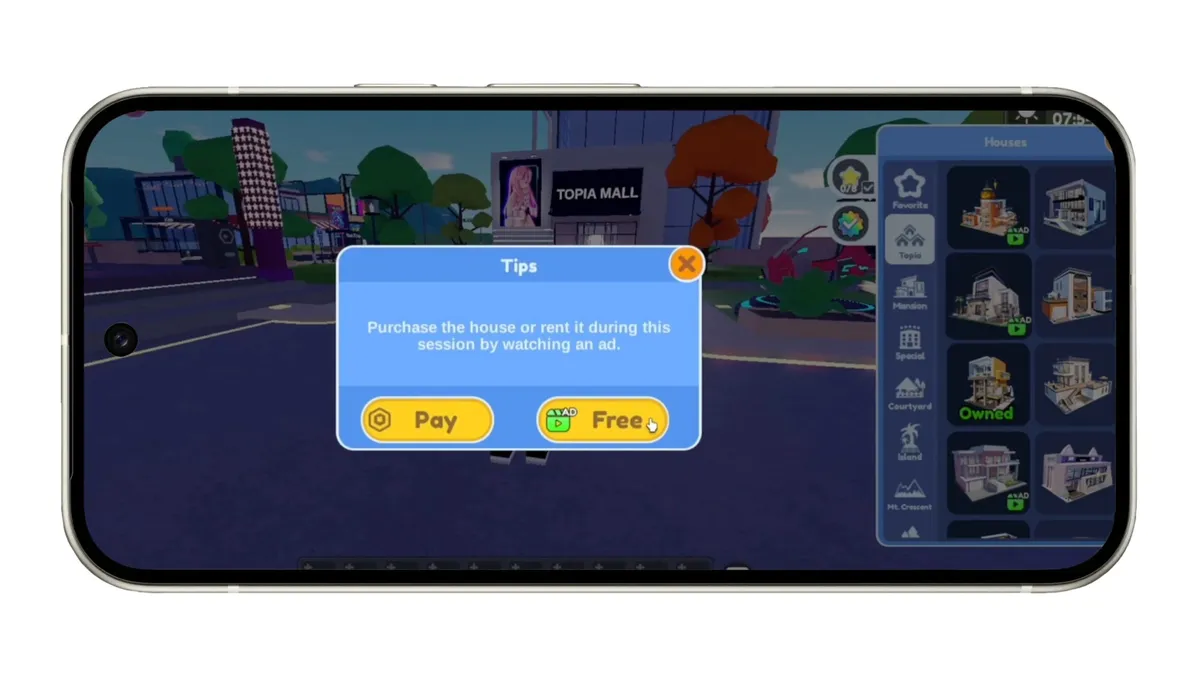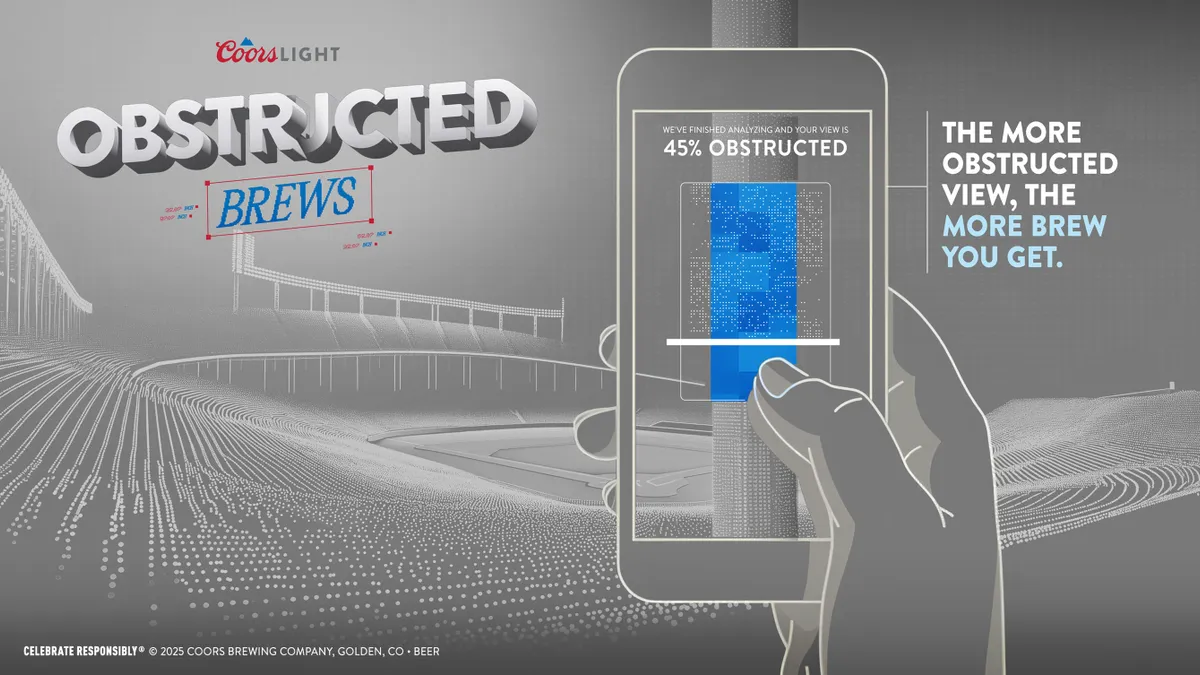Shopping on social media is set to surge this holiday season as consumers are given additional ways to buy things on their smartphones, experts say. Meanwhile, newer technologies that integrate phones with TV shopping will be less prevalent, but still show promise for cross-channel commerce platforms as video and interactive media converge for more seamless browsing and buying experiences for TV viewers.
Mobile platforms are the biggest driver of social commerce, with the percentage of people saying they've used a smartphone or tablet to buy a product through social media rising to 57% in Q3 from 53% two years earlier, according to GlobalWebIndex. Mobile's growth has contrasted with the decline in social shopping on desktop computers and laptops.
Those trends are forecast to continue through this year's holiday shopping season as social sites like Facebook, Instagram, Pinterest, Snapchat, Twitter and YouTube double down with fresh e-commerce features. Even newcomer TikTok, the social video app that's popular with Generation Z and teens, has begun testing shopping ads to capitalize on this burgeoning consumer interest.
"Shopping through social platforms will see a good amount of traction this holiday season," said Darin Archer, chief strategy officer at Elastic Path, a provider of e-commerce software. "Social commerce allows brands to reach people when their attention is already on an item of value — even when the transaction isn't happening fully in the app."
A boom in online shopping in recent years, including mobile and social, has pushed Cyber Monday to become more important than Black Friday for every age group, a Deloitte survey found. The consulting firm reports that 53% of people have increased their focus on the Monday after Thanksgiving for shopping, compared with only 44% who said the same about Black Friday.
Thanksgiving day also is emerging as a key shopping moment as people get an earlier start with their mobile devices.
"Across Facebook's products, the company has brought commerce into areas typically dominated by advertising rather than purchasing. The gap between promotion and purchase is closing and making the experience more seamless."

Darin Archer
Elastic Path, chief strategy officer
"There are more people than ever before shopping on their smartphones — they are sitting at their Thanksgiving dinner tables, and they are shopping," said Julie Van Ullen, U.S. managing director at Rakuten Marketing. Last year, her company saw a 59% jump in purchases on Thanksgiving day, outpacing growth for Black Friday and Cyber Monday.
Seamless experiences
While plenty of social ads direct users to retailer websites for further browsing and purchasing, social media companies are working to make shopping a more seamless part of the in-app experience. Instagram, the image-sharing app whose U.S. user base is forecast to lift 6.7% to 107.2 million this year, this year introduced a checkout feature to keep people locked into its platform while adding a new revenue stream that could strengthen the appeal of its advertising. About 60% of Instagram users have followed a new brand on the app after seeing an appealing ad in its vertical feed or in Stories, per a study by video technology startup VidMob.
"Instagram's move earlier this year to embed the transaction in the app was a big step toward reducing friction in the consumer's purchase journey," Archer told Mobile Marketer. "Brands are navigating the challenges of integrating the social commerce experience with mobile and web commerce touchpoints."
Instagram is a key part of parent company Facebook's broader push into social commerce amid a growing threat from Amazon, which has a fast-growing ad business. Facebook's WhatsApp and Messenger messaging apps are adding social commerce features that broaden their capabilities, similar to Tencent's WeChat app in China that acts like a complete lifestyle hub.
"WhatsApp's launch of product catalogs is another example of how mobile advertising and commerce are coming together," Archer said. "Across Facebook's products, the company has brought commerce into areas typically dominated by advertising rather than purchasing. The gap between promotion and purchase is closing and making the experience more seamless."
That power to keep consumers engaged is a key advantage for marketers seeking to drive online sales through social media advertising.
"As a consumer, your guard is down and you are looking for 'shopper-tainment'," said Brian Walker, chief strategy officer at Bloomreach, a maker of digital personalization software. "Really, this is a threat for large retailers. Consumer brands of all types need to pay attention. TikTok and Instagram may not be making a big dent yet, but it is a threat."
Social shopping strategies
The growing significance of social shopping during this year's key holiday season and into 2020 means that marketers need to adapt their strategies with the right mix of customer experience (CX), ad creative and even newer technologies like augmented reality (AR) that can help to demonstrate products and give shoppers ways to better visualize how they'll look in real life.
Higher visitor traffic from mobile users is a key time to make a good first impression through ads and AR-powered virtual try-ons, with the goal of converting new shoppers into loyal customers.
"The key to securing their loyalty is a faultless CX — and that starts on the landing page," said Jonathan Cherki, CEO of ContentSquare, a tech company focused on consumer connections with retailers. "Making sure whatever page visitors land on is consistent with the message in your ad, and makes customers feel that they've landed in the right place, is key."
"Really, this is a threat for large retailers. Consumer brands of all types need to pay attention. TikTok and Instagram may not be making a big dent yet, but it is a threat."

Brian Walker
Bloomreach, chief strategy officer
Capturing the attention of mobile shoppers who are likely scrolling through their social media news feeds is the first step, which requires a strong "thumb-stopping" creative pull.
"Ads need to be relevant and engaging for mobile, not just desktop ads resized for smaller screens," Elastic Path's Archer said. "Your mobile shoppable experience should recognize fingers, for example, and create a checkout experience that is relevant for that context rather than desktop."
While AR technology has mostly been a novelty for marketers, social media companies are working to boost its adoption by integrating more tools to give users immersive shopping experiences within their respective platforms. Facebook and Snapchat stand out as notable examples boosting AR capabilities as they vie for consumer attention.
"The power that AR gives brands to virtually place their product into the hands of consumers delivers a compelling and visually engaging way for consumers to experience products that were never before possible," said Robert Rothschild, VP and global head of marketing at Smartly.io, a social media ad platform. He predicts AR is on the cusp of mainstream adoption following Facebook's introduction of interactive AR ads this fall.
Snapchat, on the other hand, has made AR a key part of its user experience for several years, and this holiday season has showcased its Portal Lens that lets mobile users step into immersive, computer-generated worlds. Italian luxury brand Gucci, department store chain Kohl's and Toys 'R' Us Canada this fall have sponsored Portal Lenses as part of the holiday-themed promotions to stand out on social media.
Shoppable TV
Popularized by QVC, shopping directly from traditional TV has been around for years, but mostly required viewers to call a toll-free number or to visit website to purchase. Interactive TV also has been promised since Time Warner Cable experimented with its now-defunct Full Service Network in the 1990s. It had promised on-demand video, shopping and gaming, but didn't deliver a positive experience for consumers. The technology is seeing renewed interest as more households have broadband service and connect their TVs directly to the internet to gain access to streaming platforms. The popularity of smartphones also is helping to give consumers more flexibility in interacting with TVs, and voice-powered technology may enhance that further as users increasingly look to link their various devices throughout their smart home.
NBCUniversal last month introduced Shoppable TV ads that let viewers use their smartphones to buy products featured in shows by scanning QR codes that pop up to indicate when a product is available. The technology is unlikely to have a profound effect on consumers shopping behavior this year, but may see more traction in the future.
"New shopping experiences will only become truly significant if they make shoppers' lives easier and more seamless," Elastic Path's Archer said. "I don't know that shoppable TV is quite there yet, but QR codes are definitely having a resurgence. If consumers find these shoppable TV experiences valuable and convenient we could definitely see an uptick in adoption as players like NBC roll out shoppable TV."


